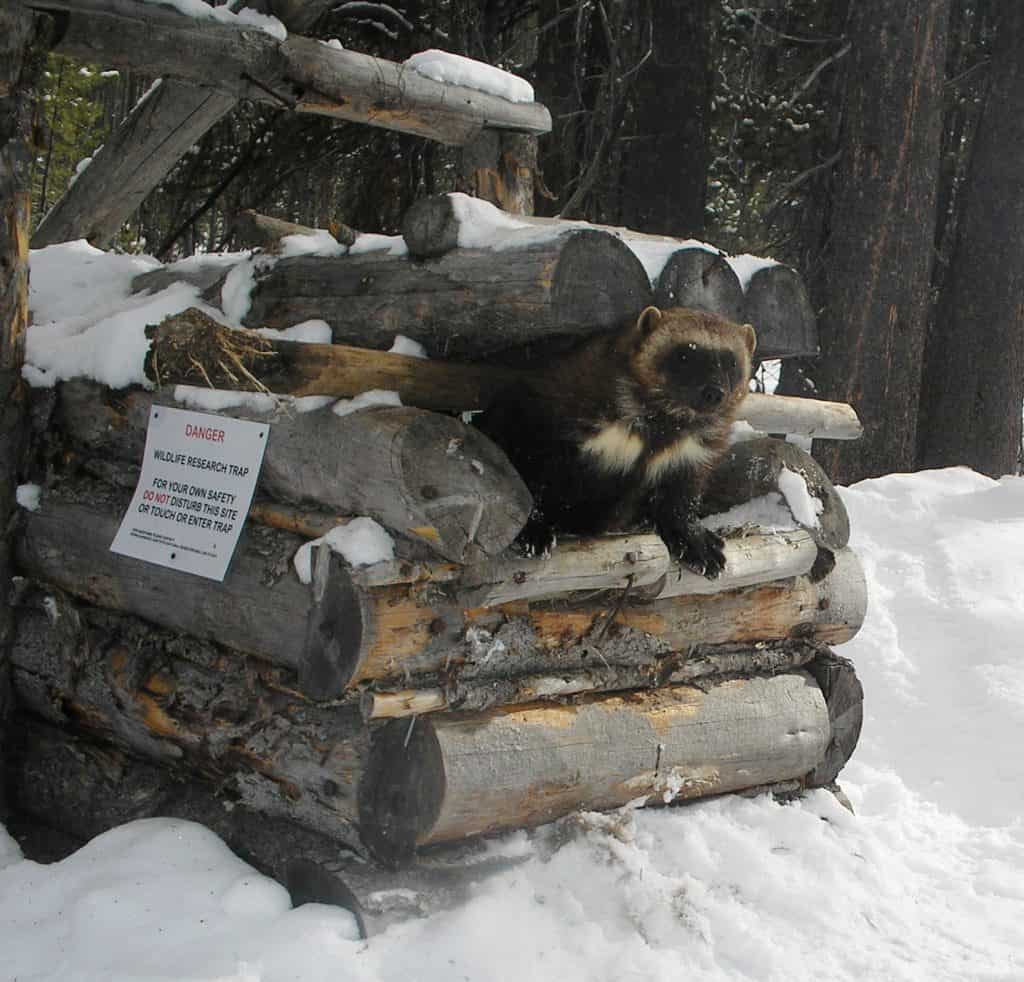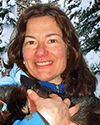Share this article
A Study of Shared Winter Habitats — from The Wildlife Professional
Tracking Forest Carnivores and Backcountry Recreationists
On a hot afternoon in Glenwood Springs, Colo., an eclectic array of state and federal administrators, wildlife biologists, recreation planners, scientists and law enforcement professionals gathered to discuss winter recreation and Canada lynx, a federally listed species. Discussing lynx can cause considerable heat among Coloradans even on a frigid winter ski day, let alone during a hot summer afternoon when they were in no mood for scientific hyperbole from some researcher. This somewhat contentious meeting was the start of an ongoing conversation on how best to study rare, secretive forest carnivores and winter recreation across the broad expanses of three western states.
Shared outdoor spaces
Recreation is a primary reason people visit public lands in the western United States and rural communities depend on revenues from winter recreation. Less than 60 miles from the Denver metropolitan area, the White River National Forest attracts over 12 million annual visits by recreationists, 60 percent of which are for downhill skiing and snowboarding (USDA Forest Service 2015). Communities like McCall, Idaho; Vail, Colo., Jackson, Wyo. and their surrounding state and federal lands are primary recreation destinations that support world-class ski resorts and limitless opportunities for backcountry winter recreation.
The same high mountains and deep snow that support backcountry winter recreation provide important habitat for mid-sized carnivores like Canada lynx (Lynx canadensis) and wolverine (Gulo gulo), which persist in the West as small, low-density populations of a few individuals in large home ranges. The growing popularity of backcountry winter recreation heightens the need for scientists and resource-use planners to understand the responses of these potentially sensitive wildlife species that could inform recreation management and federal listing decisions. A growing body of literature describes wildlife response to various forms of recreation, but to obtain this information and to advance species management and conservation of these rare carnivores requires some novel research approaches.
Our group was determined to document the spatial movements and “habitat use” patterns of winter recreationists with the same rigor as biologists expect for wildlife species. We needed to do this simultaneously and in the same areas we studied forest carnivores, which meant we needed to systematically document a diversity of backcountry winter recreation activities, such as snowmobiling, backcountry skiing and heli-skiing, at various levels of intensity. Our study area had to be vast — actually, multiple large studies across Idaho, Wyoming and Colorado — to achieve a scientifically representative sample.
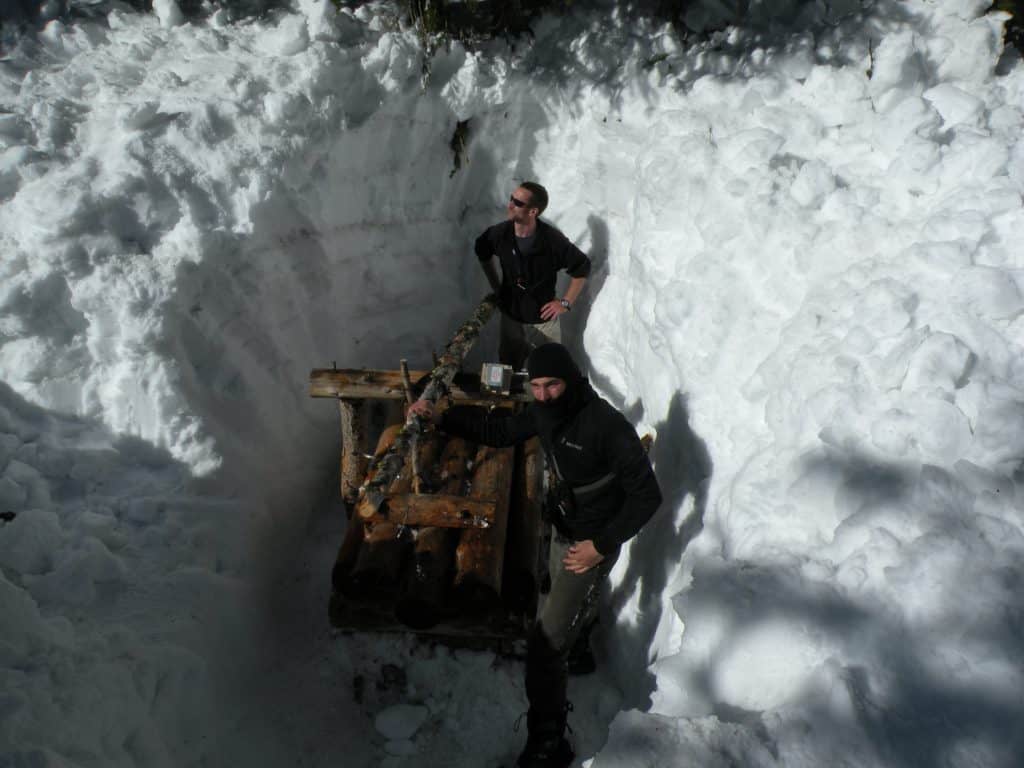
Maintaining box traps during winter in high-elevation, snow-covered study areas required a lot of digging to keep traps open and accessible. This three-foot-tall wolverine box trap built on a three-foot platform required researchers throughout the winter to keep the trap lid and mechanisms snow-free and functioning. ©Blakeley Adkins
Most of our team were wildlife researchers that knew how to study these species. However, we found the challenge of studying our own species — humans — much more daunting. Wolverines and lynx — captured humanely in box traps, and then anesthetized to attach GPS collars before being released — really had little choice but to participate in our research. But, how could we convince winter recreationists to allow us to track them? Given that trapping and anesthetizing were not an option, asking winter recreationists to voluntarily carry GPS units for us seemed like an effective approach. The only hitch was the willingness of recreationists to cooperate.
We invested in an inventory of small, discrete GPS units to deploy with our human subjects. Skiers in particular are weight conscious, and we didn’t want to make their voluntary participation burdensome. Next, we hired an army of technicians who spread out across our study areas to arrive at winter-recreation trailheads early enough in the morning to greet even the most hard-core backcountry user.
Many of our technicians were ardent backcountry recreationists themselves who could walk the talk. They were able to approach winter recreationists respectfully and with real enthusiasm to chat about our study and ask if they would volunteer to carry a GPS unit. These chats stimulated some interesting conversations and both parties learned much from the interactions. Many local residents did not believe these species actually occurred in the study area and were surprised to learn that we were monitoring these animals with GPS collars as we spoke. Even the most skeptical became intrigued as we described our study design to simultaneously track recreationists and lynx or wolverines. We had to clarify, though, that the goal was not necessarily to document animals flushing and running away as the recreationist traveled by, although for many that image seemed to be the immediate vision that came to mind.
Science and communities
Our one-on-one outreach, particularly our willingness to listen to and discuss any concerns expressed by recreationists, allowed us to share information about these little-known species. This dialogue resulted in an unexpectedly high success rate. The inherent interest of recreationists in the wildlife that shared these mountainous landscapes provided the link for us to hear recreationists’ concerns.
“I thought I might get hassled,” one recreationist wrote on his blog, “but instead some cool Forest Service dudes asked if I wanted to help study Canada lynx by carrying a GPS unit. How cool is that? I encourage everyone to participate.”
Participate they did. About 90 percent of the recreationists we approached agreed to carry GPS units and help the study. Over four years on multiple study areas across three states, we collected 8,539 individual GPS tracks of backcountry snowmobile, ski and heli-ski recreationists, representing 145,765 miles of total recreation tracks. We also estimated total visits to our study areas using infrared trail counters, including over 20,000 visits per year to the Teton Mountains backcountry in Wyoming, collecting some of the largest spatial depictions of human recreation movements ever documented.
Since we collected no personal data from the volunteers, getting back the GPS units and their data was a challenge. We set up various drop boxes at trailheads and nearby towns. We also offered to provide the GPS information we collected to the recreationists, if they desired, to view in Google Earth or similar mapping software how far and fast they traveled and how much elevation they gained. The incentive caused so much excitement, some recreationists wanted to participate again.
To keep the excitement and momentum going, though, we needed more incentives. Our non-governmental research partners handed out bumper stickers and raffle tickets for a chance to win avalanche safety gear and other cool prizes at the end of the season. Reaching out to local businesses, we found that many were happy to provide a discount or other rewards for recreationists returning GPS units to their businesses. In Idaho, our technicians provided each recreationist with coupons identifying these business offers. It was a win-win-win situation. We retrieved the GPS units. The recreationists received a reward. The businesses attracted customers.
It also unexpectedly created a community-based atmosphere and attitude towards the research, with businesses and winter recreationists participating and talking about the effort. In one community, friendly competition between businesses emerged, with increasingly enticing offers, including free beer, a favorite, for dropping off a unit. In some cases, even the local newspapers got into the action, contributing graphics for local ads encouraging the return of the GPS units.
The high public participation and positive interactions extended across a variety of communities, large and small, urban and rural. We approached the public in the spirit of transparency, honesty and enthusiasm. The success of our research program was the direct result of public participation.
In each community, we were inevitably warned that this community is different and that we wouldn’t get the cooperation we did elsewhere. Instead, we discovered that the vast majority of winter recreationists defied these expectations and were generous in their time and willingness to assist the research, even with the perceived risk that the study results could eventually affect their recreation pursuits. Many said they were willing to modify their behavior if it meant minimizing their impacts to the two iconic species.
In Colorado, recreationists offered assistance with the project, performing maintenance on our snowmobile equipment and helping orient our technicians to local recreation terrain. A few even showed us where lynx hung out! The Idaho State Snowmobile Association maintained a position that they did not want to impact wolverines, and their consistent and open support for our research helped convince some potentially skeptical members to volunteer. Many recreationists recognized that the rarity and management status of these species, combined with the clearly expanding popularity of backcountry recreation, would lead to the need for management approaches.
Across our study areas, the public recognized that by participating they were helping ensure excellent data collection to best inform these management discussions. To those convinced that their backcountry activities did not affect the species, we encouraged them to help us collect the data to test their assumptions.
There were, of course, some we could not convince to support the research and who had limited interest in these species. At a public meeting on the project, one memorable — and sincere — recommendation was to capture and move all the area’s wolverines to Alaska, removing any potential conflict and giving the wolverines a great place to live out their lives.
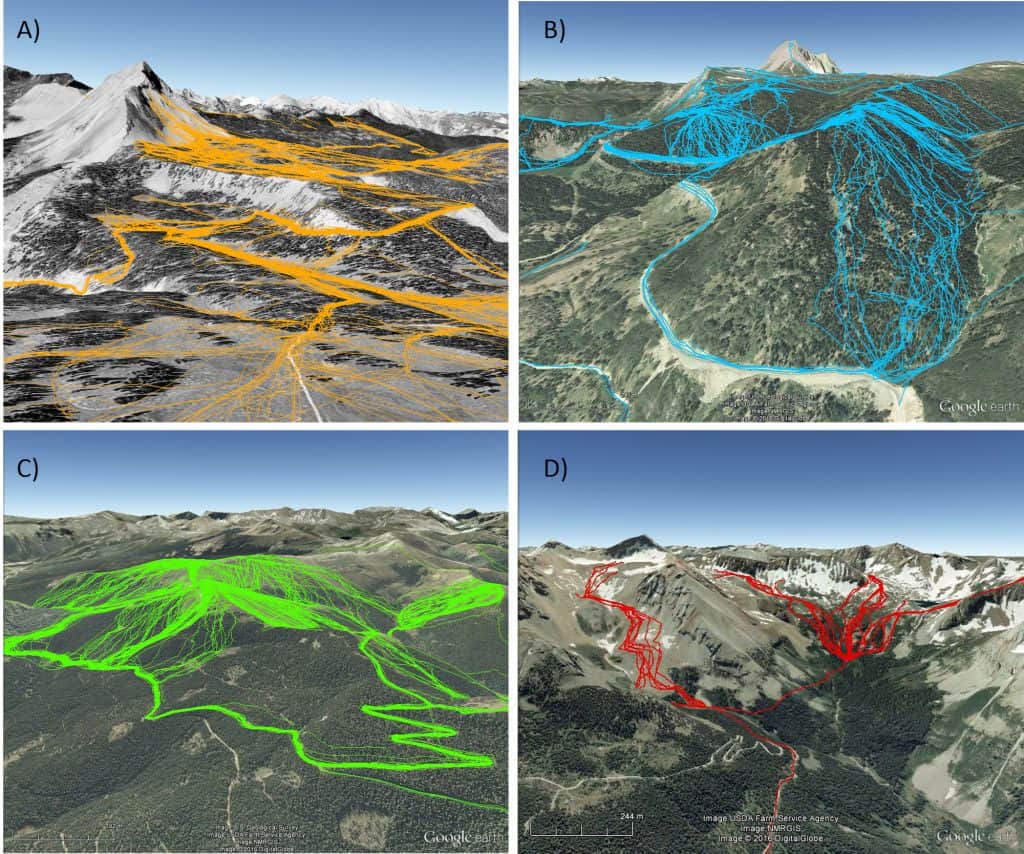
These four mapa compares paths taken by backcountry recreationists. The tracks from snowmobile riders are shown using forest roads to move through forested areas to more open, high mountaintops, where riders can access an off-trail play area (A). Backcountry skiers can be seen funneling uphill on forest roads and then dispersing as they come down the mountain through the trees (B), while snowmobile-assisted hybrid skiers show heavy use of trails while being towed by snowmobiles to favored locations and then similar use of treed slopes while skiing down the mountain (C). Skiers ferried by helicopters to extremely inaccessible areas then ski down to a central location for pickup, traversing slopes that are open and above the tree line (D). ©Rocky Mountain Research Station
Carnivores and recreationists sharing habitat
Our winter studies of rare carnivores across multiple seasons required large field crews that operated routinely under difficult conditions. We enlisted the help of local highly skilled snowmobilers to help break trails to our network of box traps following big storms. These people relished using their snowmobile skills to help us reach far-flung traps and enjoyed getting hands-on experiences with the research. The routine maintenance of the trap-line is all-consuming in these rugged and snowy environments, with traps requiring constant checking and maintenance, and our crews took the challenge seriously. We incorporated recent technology that placed satellite transmitters on our traps that sent email and text messages to our research teams when the trap closed so we could quickly mobilize our crews.
Clearly, winter recreationists are not a homogeneous group. Each type of winter recreationist exhibits unique movement patterns, whether a snowmobiler, backcountry skier, hybrid skier (a skier who uses snowmobiles to access terrain), or skier using helicopters.
Lynx and wolverines perceive these same landscapes at multiple spatial scales and to meet an entirely different set of needs than recreationists. To understand this spatial complexity, we tested our ability to predict recreation habitats in Colorado. We created resource selection functions that defined so-called snowmobiler habitat, backcountry skier habitat or hybrid-skier habitat to predict the probability and spatial extent that recreationists use landscapes. The unique habitat features that define habitat for each class of winter recreationists can be compared to those of lynx in Colorado to provide nuanced understanding of overlap and behavioral responses.
Collaboration as a foundation
Our research succeeded thanks to collaboration from a variety of partners. In 2009, Jeff Copeland, a former wildlife biologist for the Idaho Department of Fish and Game and the Rocky Mountain Research Station and now a director at The Wolverine Foundation, initiated our wolverine study by establishing a working relationship with the Idaho State Snowmobile Association. Essential to our studies was a close working collaboration between researchers and the management arm of the U. S. Forest Service and state wildlife management agencies. State agencies, such as the Idaho Department of Fish and Game and Colorado Parks and Wildlife, were critically important research allies that helped ensured our research was focused in areas that provide the greatest chance of success. Also invaluable was the considerable collaboration offered by local businesses — including ski areas, backcountry guide services, heli-ski operators, local, regional and state recreation groups and volunteers.
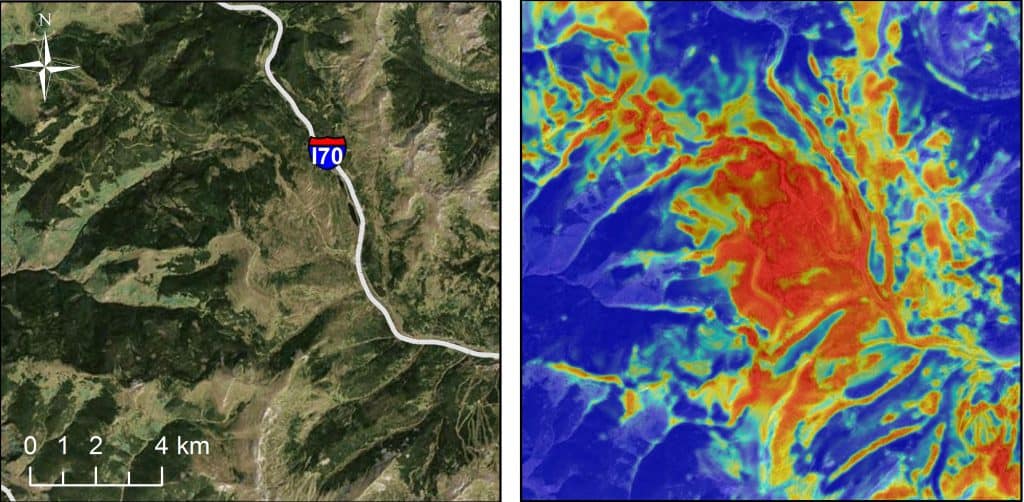
The probability of off-trail snowmobile habitat at Colorado’s Vail Pass Recreation Area (right) is shown in comparison to topographic map showing I-70, the major road through the area (left). Areas with low probability of recreation use are shown in blue and high probability areas in red. ©Rocky Mountain Research Station
Lessons learned
Backcountry winter recreation is no longer the activity of few hardy souls. With improved technology, both motorized and non-motorized, backcountry winter recreationists are developing the skills to seek out untracked snow on that perfect slope. Most recreationists deeply appreciate the wild landscapes they visit, and they are the advocates for access and protection these open landscapes.
Our work demonstrated that research has a central role in balancing the conservation needs of sensitive carnivores with increased demand for winter recreation, especially in developing shared visions that bridge the divide across user groups. Recreationists and communities are willing to establish collaborations and creative partnerships to accomplish shared research visions. Transparency in our research objectives and activities provided the foundation.
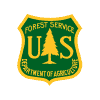 Finally, although we protected the identity of the recreationists, in retrospect, collecting socioeconomic data to consider how age, gender or economic status affected their movements and willingness to consider sensitive species when planning next outdoor adventure could have helped us better understand their attitudes from the start.
Finally, although we protected the identity of the recreationists, in retrospect, collecting socioeconomic data to consider how age, gender or economic status affected their movements and willingness to consider sensitive species when planning next outdoor adventure could have helped us better understand their attitudes from the start.
To cite this article: Squires, J., Heinemeyer, K., and Hebblewhite, M. 2018. A study of shared winter habitats: Tracking forest carnivores and backcountry recreationists. The Wildlife Professional 12.1: 45-49.
Header Image: A backcountry skier carries GPS units to document their spatial tracks as part of a U.S. Forest Service study on the impacts of winter recreationists on Canada lynx and wolverines. ©Round River Conservation Studies





